Just below the Tiffany-style dome of Cleveland’s historic Cleveland Trust Rotunda, between the graceful columns, is a series of beautiful murals painted by Francis Davis Millet, who died at age 65 in the sinking of the RMS Titanic on April 15, 1912.
The following descriptive narrative, accompanying my photographs, was written by Leila Mechlin, and published in World’s Work, December, 1909. World’s Work was a monthly magazine which celebrated the American way of life and its expanded role on the world stage, founded in 1900 and edited by Walter Hines Page, until 1913, when his son, Arthur W. Page, became the editor.
The decorations by Mr. F. D. Millet in the new Cleveland Trust Company Building consists of a series of thirteen panels, each approximately sixteen by five feet, illustrating the settlement of the State of Ohio, but typifying the pioneer movement which resulted in the opening up of the great West. In composition they are very simple, and in effect, frank.
In the great rotunda used as a banking room, and therefore accessible to the public, these panels form a frieze, terminating the wall forty feet above the floor level, and behind a colonnade supporting the dome. Because of this elevated and recessed position, it was essential that the paintings should be strong in color and positive in treatment. Deep blues and greens predominate, enlivened by touches of brilliant red – and the pigment is seen to have been held in broad, ample masses. The same scheme of color has been used for the entire series, and when viewed in position all are found in harmony, the eye passing from one to another without conscious jar or interruption. The horizon line has been made continuous, and though each panel is a complete composition, the frieze, as a whole, is a unit.
It took more than a year to execute this series of thirteen panels, Mr. Millet and two or three assistants working from morning till night. First, the general scheme was sketched; then full-sized cartoons were made and tried, experimentally, in place.
When these were found satisfactory, the work began in earnest; accurate drawings on huge sheets of manila paper were made in charcoal, corrected, and restudied; finally, when absolutely correct, these were transferred to canvas.
THE NORSE DISCOVERERS – Over four hundred years before Columbus discovered America the Norsemen are supposed to have crossed the North Atlantic and landed in what we now designate as New England. According to this tradition they were, therefore, the first white men to set foot in the territory now occupied by the United States. It was in such craft as is pictured in this painting that they made their daring explorations. They are here represented as approaching the coast of America.
THE PURITANS – The first settlers in New England were the Puritans who sought religious freedom in a new land. They were a God-fearing people and the Gospel they preached, severe as it may now seem, engendered hardihood and a stoical courage, without which no pioneer could find success. The fact that this Gospel was preached beneath the dome of heaven where the majesty of nature was nobly manifest, made an impress upon the race which has influenced succeeding generations.
EXPLORATION BY LAND – It was under the guidance of the Indians that the first settlers in America ventured from the coast country inland. Trained hunters and fighters, skilled woodsmen and sagacious pathfinders, they led the white man into that territory which for countless generations had been indisputably their own. An interesting contrast is suggested in this picture between the white man and the savage: the one bred of traditions, the other the child of nature.
LASALLE ON LAKE ERIE – One of the bravest and most sagacious explorers of the American continent was Sieur LaSalle, a Frenchman, who in 1675 built a small vessel and sailed from the Niagara River up the Great Lakes to Green Bay in an effort to find entrance to the Mississippi River by which he purposed to descend to Mexico. In this picture he is represented on Lake Erie at the mouth of the Cuyahoga River, looking toward that portion of the shore where the City of Cleveland now stands.
FATHER HENNEPIN AT NIAGARA FALLS – In 1675, Louis Hennepin, a French priest of the Francescan order, was sent to Fort Frontenac as a missionary to the Mohawk Indians. In 1678, being attached to LaSalle’s expedition, he went to Niagara, near where the vessel in which they sailed was built. It was the moment when he first saw the Falls that is here depicted. The brave missionary and dauntless explorer is seen to be moved with reverent awe by the majesty of this great work of nature, then unspoiled by man.
EXPLORATION BY WATER – Not only by land, but by water, was exploration made as is seen in this picture. The Indian again is guide. The canoe in which the journey is being made is of his building and its shapeliness bears witness to his esthetic instinct. Both the young pioneer and his guide have their attention fixed on something ahead, typifying, as it were, the fascination of that which is beyond – the undiscovered. The coloring in this painting is especially attractive and the scenery very picturesque.
MIGRATION – Following close upon the heels of exploration came migration. It has been truly said that since the dawn of recorded history the West has been the goal of human hope. The prarie schooner seems today an odd craft, but it was a large factor in the settlement of the states beyond the seaboard. In it, as will be seen from this picture, were conveyed the household goods as well as the women and children and aged members of the family.
BUYING LAND FROM THE INDIANS – Cleveland was first settled in 1796 by the Connecticut Land Company and tradition has it that these New Englanders purchased from the Indians the ground upon which they staked out their claims. Here in this picture is seen the Indian affixing his mark, or signature, to the deed of sale, his camp and wigwams nearby, the goods for which he has bartered his birthright at hand ready for delivery. From this time on the Indian does not appear in this picture history of the settlement of Cleveland.
SURVEYING THE SITE OF CLEVELAND – In this picture Moses Cleaveland is seen surveying the site of the city which now bears his name. He has set up his transit, by means of which fixed lines are established, on an elevated bit of land from whence long vistas are obtainable. His young assistant is using a stump as a table and making notations on the map as the surveyor directs. This is invariably the initial step in laying out a town or city. It was as a surveyor, it will be remembered, that Washington began his career.
FELLING THE TIMBER – After the land was purchased and surveyed it had to be cleared to some extent before the home could be built or the soil tilled. The axe carried on the shoulder of the pioneer across the mountains came again into use. It is Autumn in this picture and the foliage has taken on a ruddy hue. There is effulgent beauty in the landscape which apparently, momentarily, impresses with wonder and awe the young hardy pioneer as he pauses in his work, weary but undaunted.
BUILDING THE LOG CABIN – When the clearing was made and the timber felled, then came the work of building the home. It was in the log cabin of pioneer construction that some of our greatest statesmen were born and reared. These cabins were simple, unpretentious and rude, but serviceable, substantial and in harmony with their environment. In this picture are seen two pioneers sawing a log to be used in the construction of such an humble dwelling. It is hard work but permits rhymithical [sic] motion.
PLOWING THE CLEARING – The log cabin built, the well dug, the timber cleared, then came the work of plowing, and the oxen that in all probability drew the prarie schooner into the new land again come into service. These patient brutes supply the motive power which through the guidance of man’s hand gains utility. This picture represents the battle with the soil and impresses upon the observer the dignity of the labor. A certain touch of picturesqueness is given by the red yoke of the handsome oxen.
GATHERING THE HARVEST – Lastly in this interesting series comes the reward, the gathering of the crops. The seed has been sown in the plowed ground, the blade matured, the corn ripened. A season has passed and the soil has been conquered. Part of the crop is still standing but a large portion has been cut. To the left are fine large shocks and in the basket carried by the pioneer farmers is the golden ripe grain on the cob. On the faces of the men is suggested not merely joy but solemn gratitude.
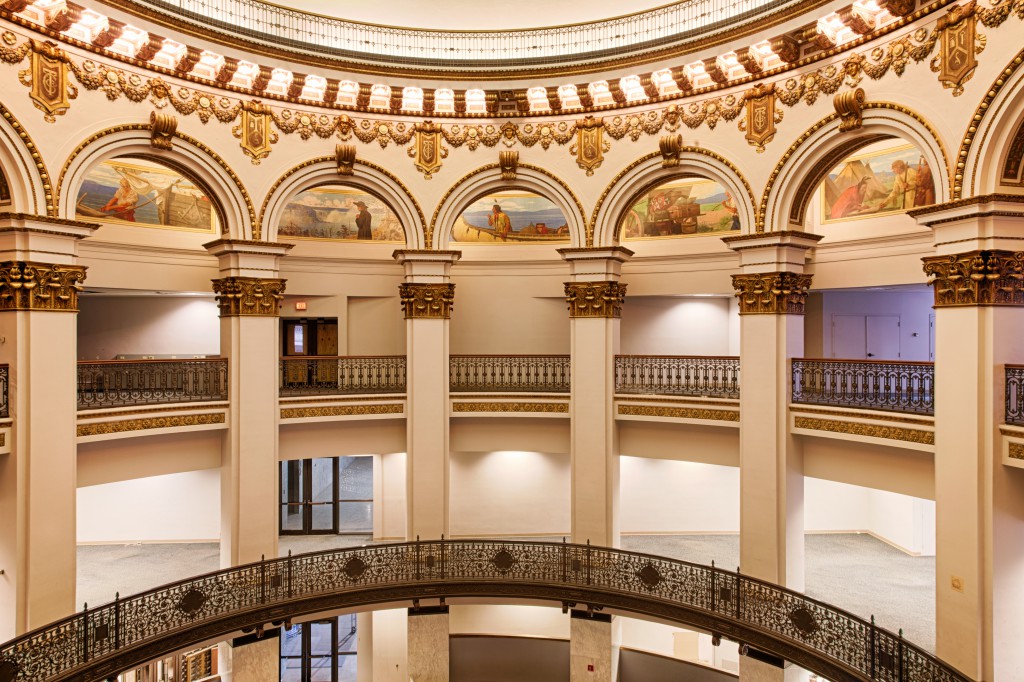
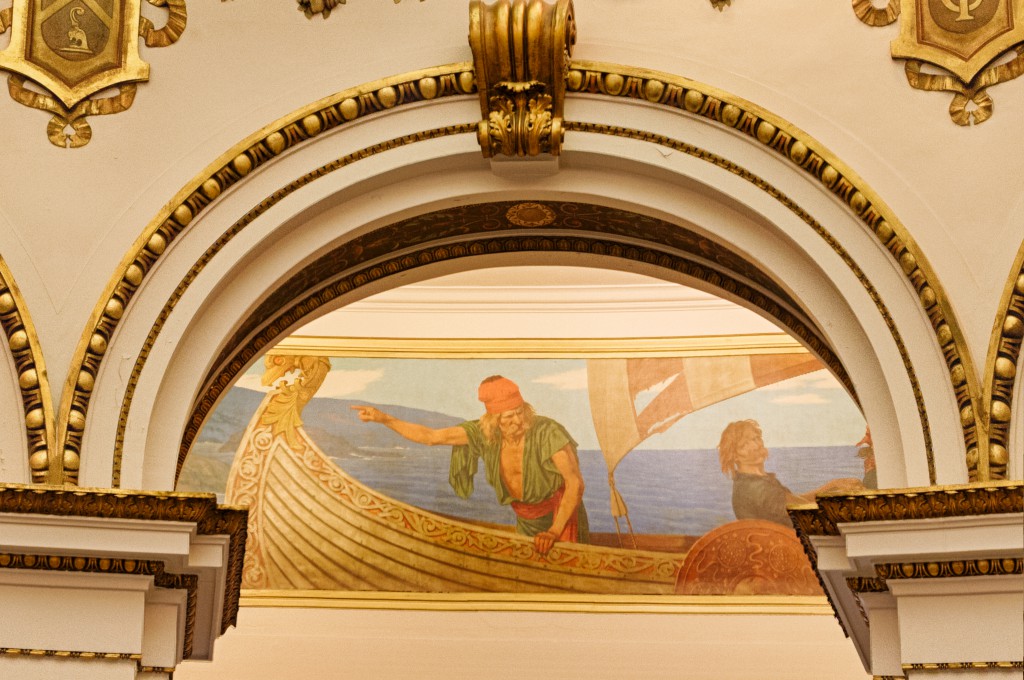
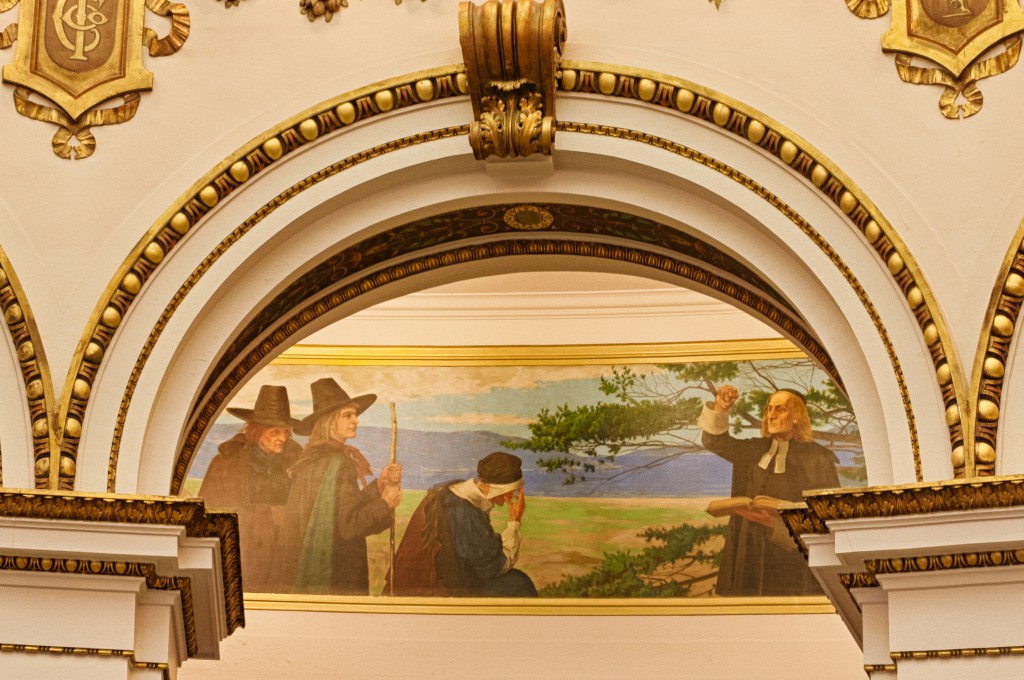
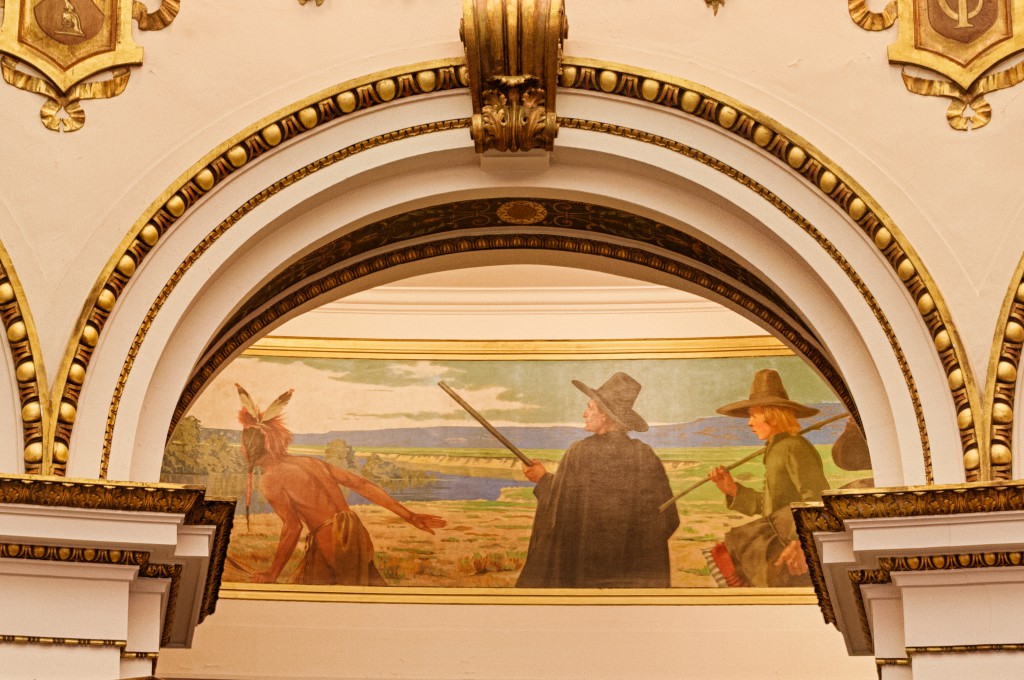
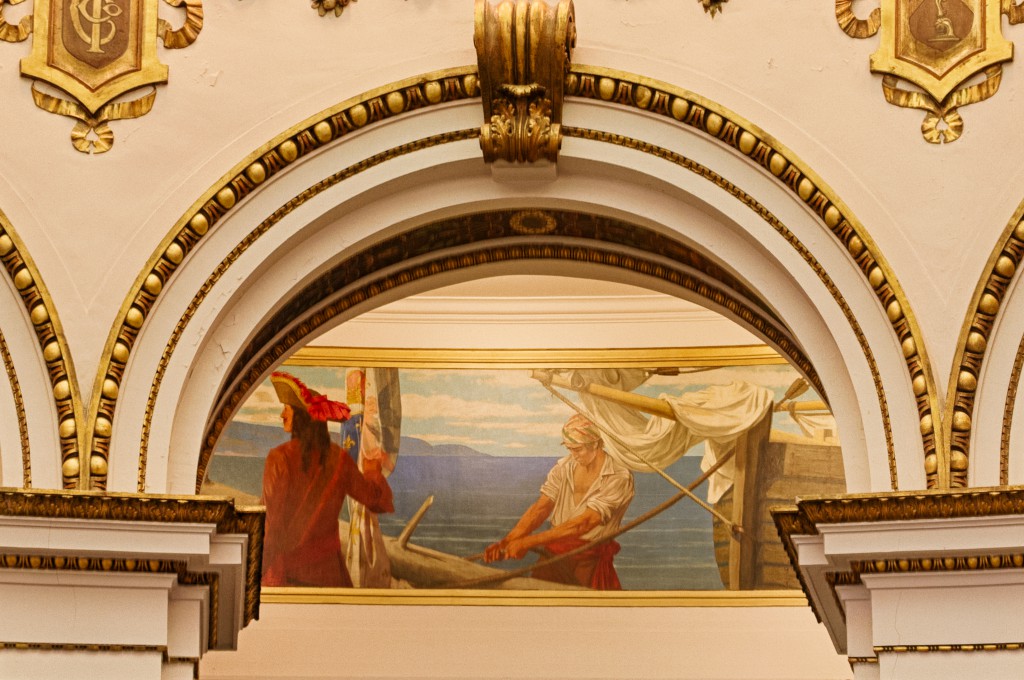
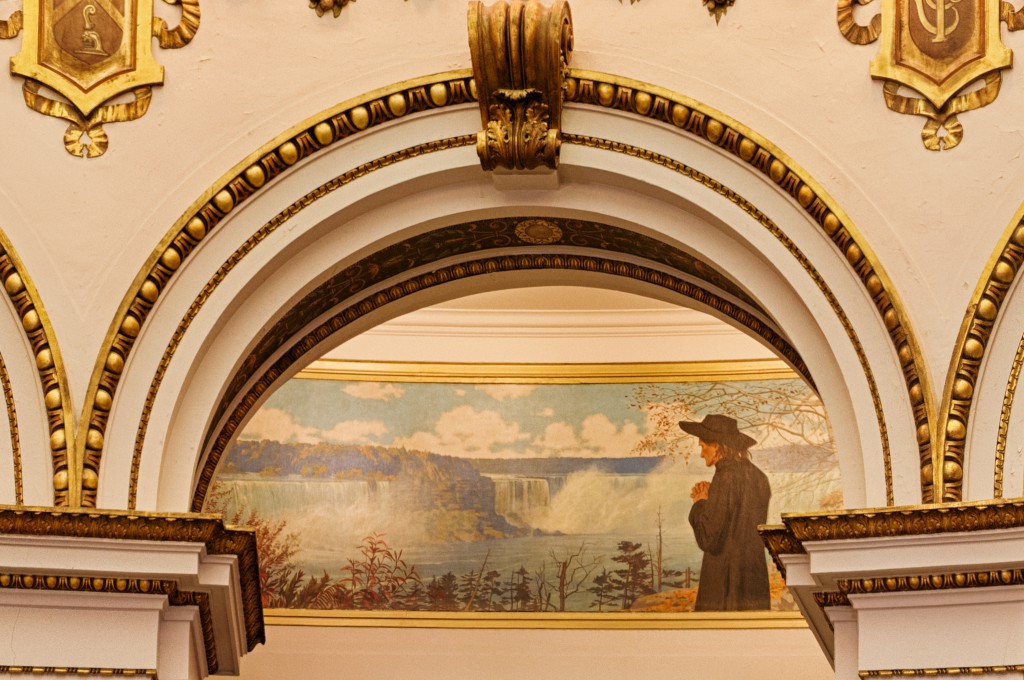
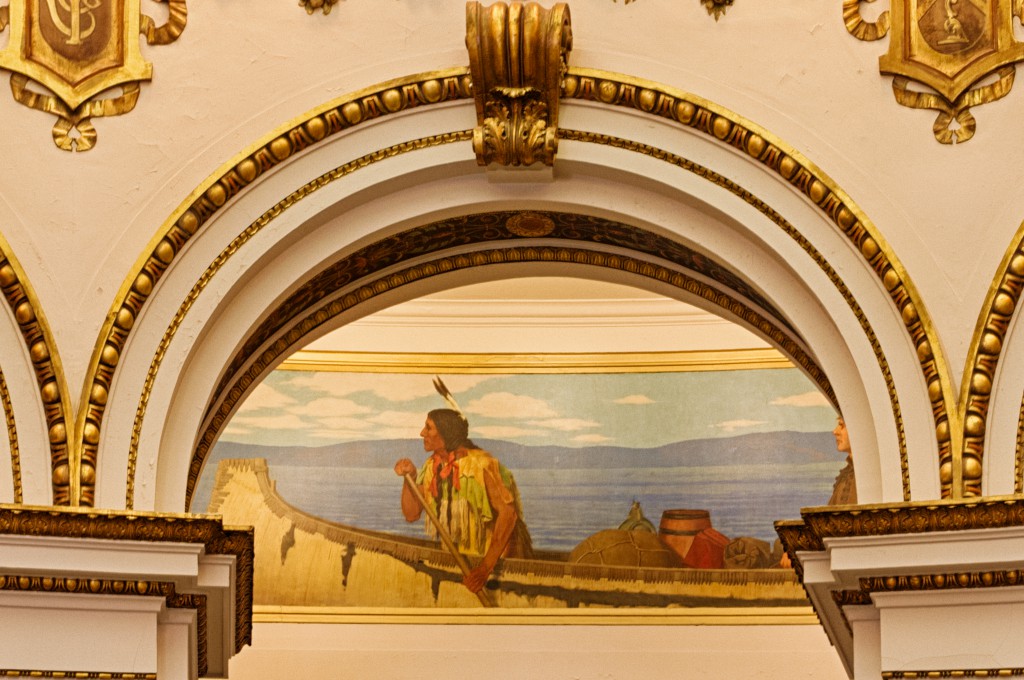
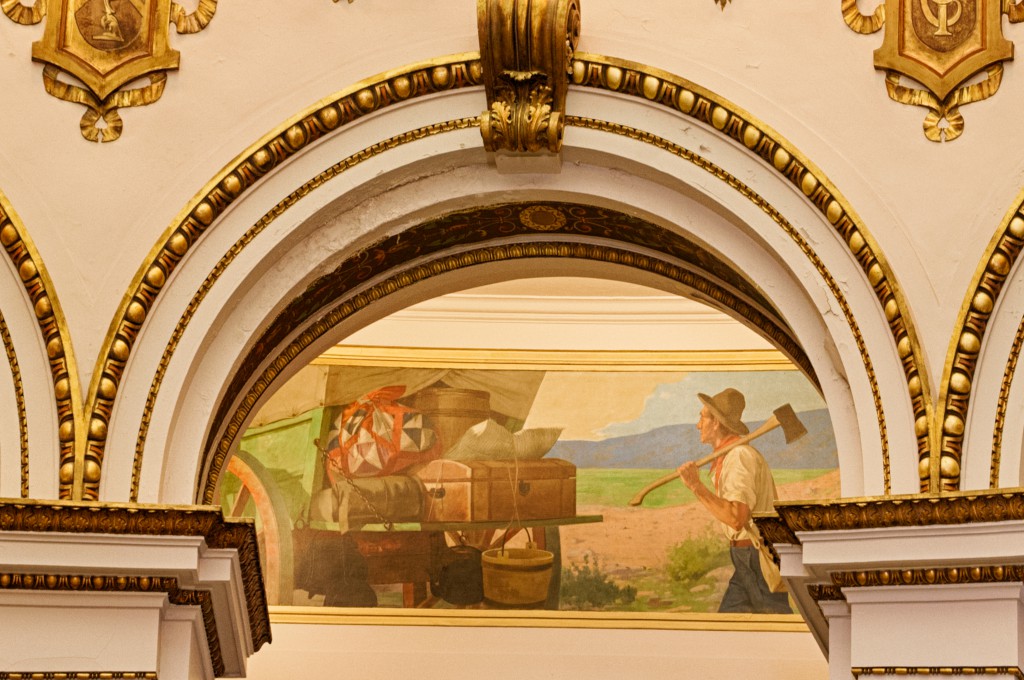
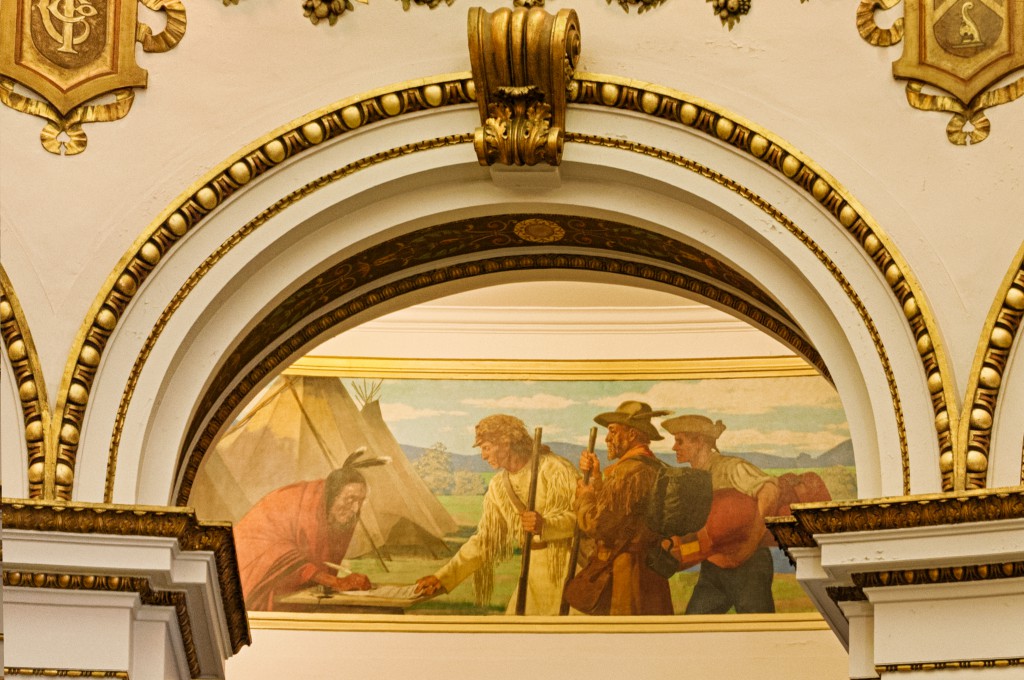
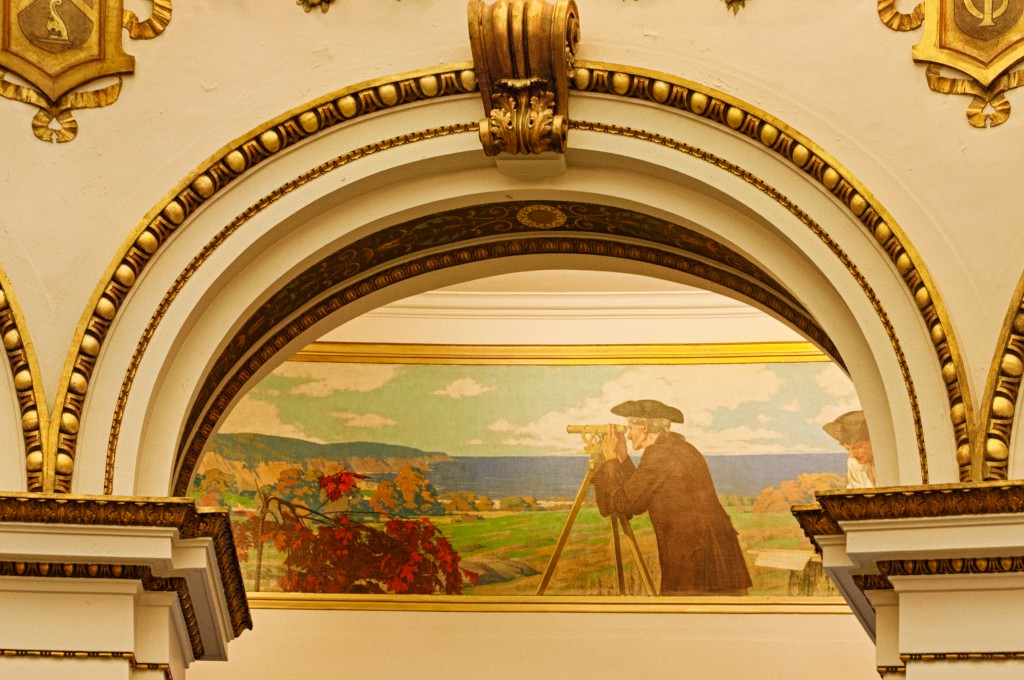
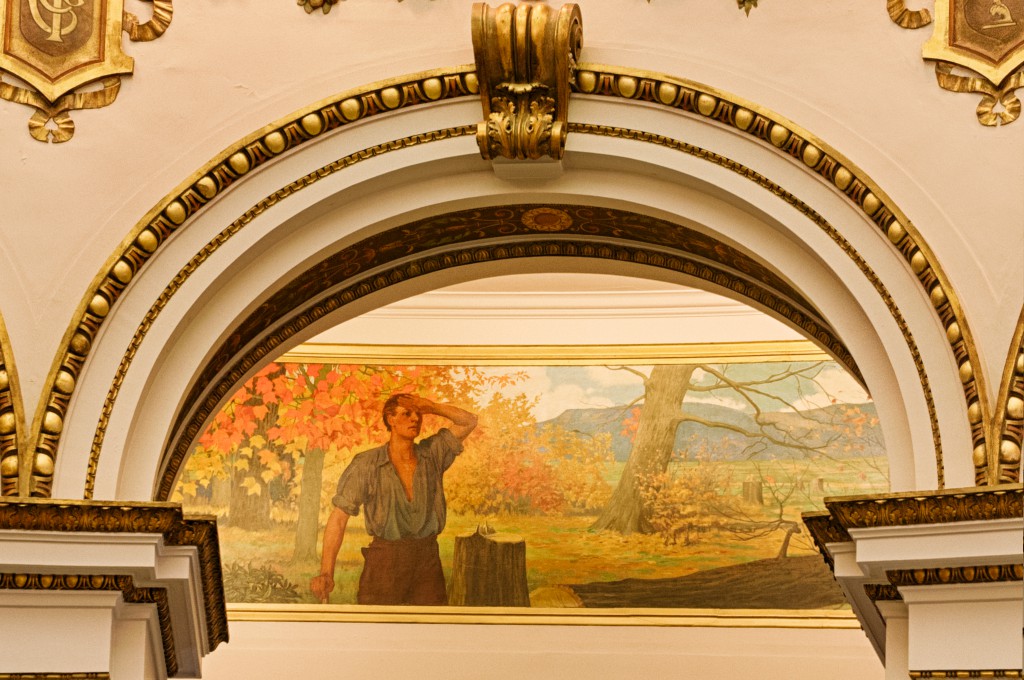
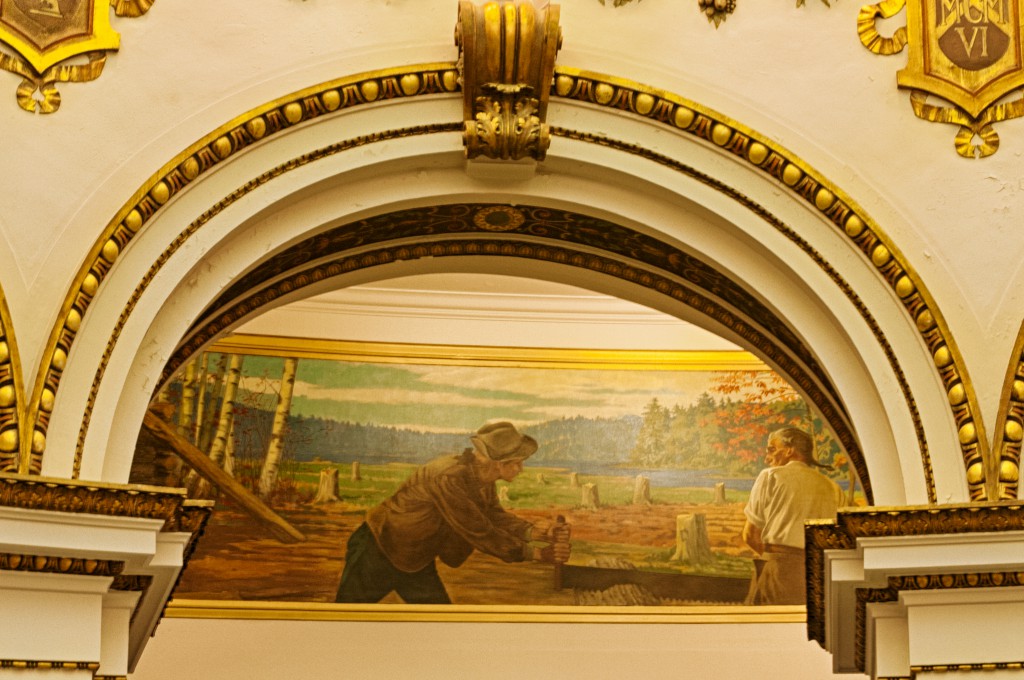
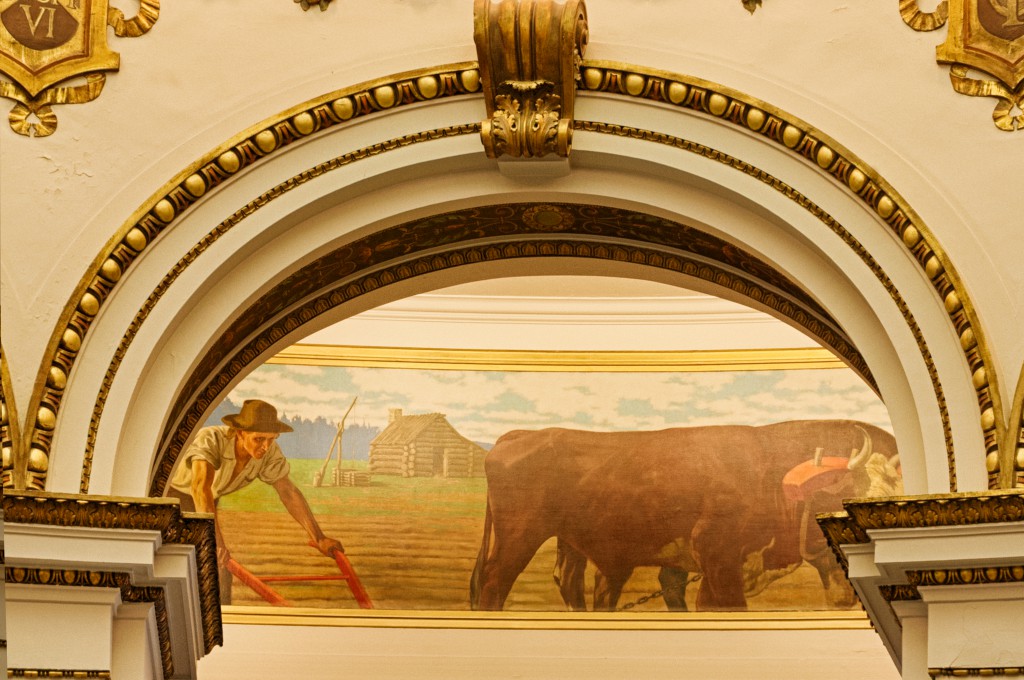
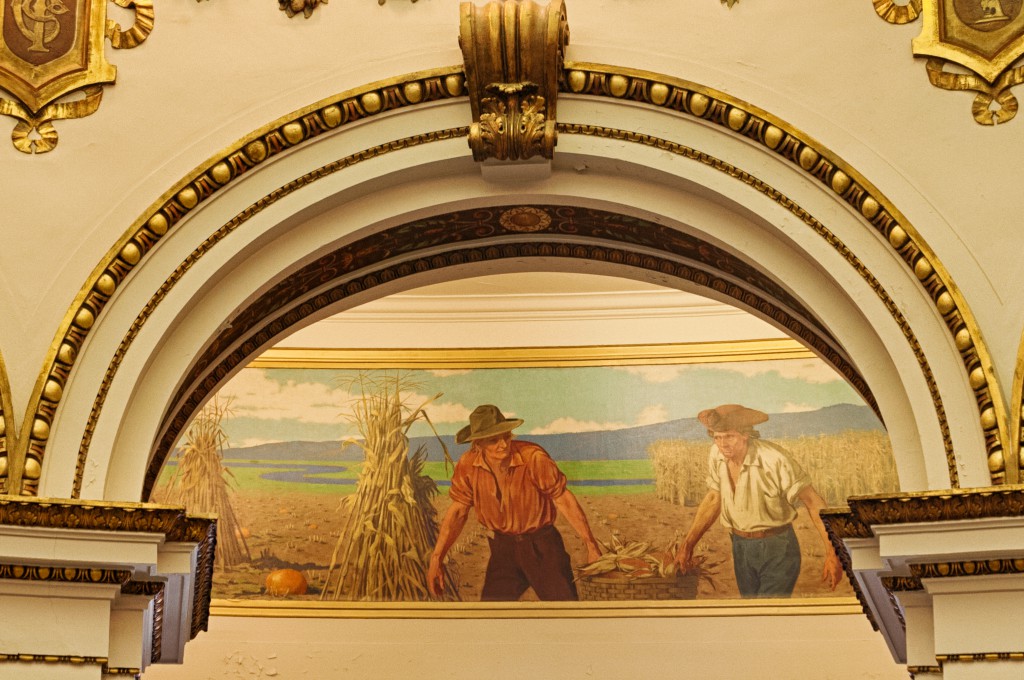
I love seeing murals such as these thanks for sharing.
This post was a change of pace, Nick. I wanted to share my images of the murals, but I also wanted to preserve the historic description of more than a century ago. It will be interesting to see how the post is received. Thanks for your comment!
Best,
Lauren
This was so interesting to see and read. Beautiful and educational at the same time. Thank you for passing this to all.
Thanks for your kind comments, Sheri, and glad you stopped in again. Cleveland has so many beautiful murals, and those in the Rotunda have to count in the most beautiful. I was thrilled to find the 1909 descriptions to include in the post. I look forward to your next visit.
Best,
Lauren
Just finished viewing your entire website, Lauren. Particularly enjoyed your powerful images of Cleveland, though all of your posted work is evocative. I have visited virtually every major city in the US and Cleveland, as odd as it may seem to some, has always struck a chord with me. It exudes the power and strength of awesome, historic American industrial development and world position. We are a changing nation. I’m very happy that you are so artfully recording what is, what was and what is newly developing in the great American city of Cleveland.
Thanks for stopping by, Scott, and thank you for your very kind comments about my work and about my city. The rumors of Cleveland’s death are greatly exaggerated! Cleveland is alive and well, and getting better! I hope that you will visit often.
Best,
Lauren
Wonderful site to visit after seeing the murals at the new Heinens. Thank You for sharing this site.. I benefited from the research and posting.